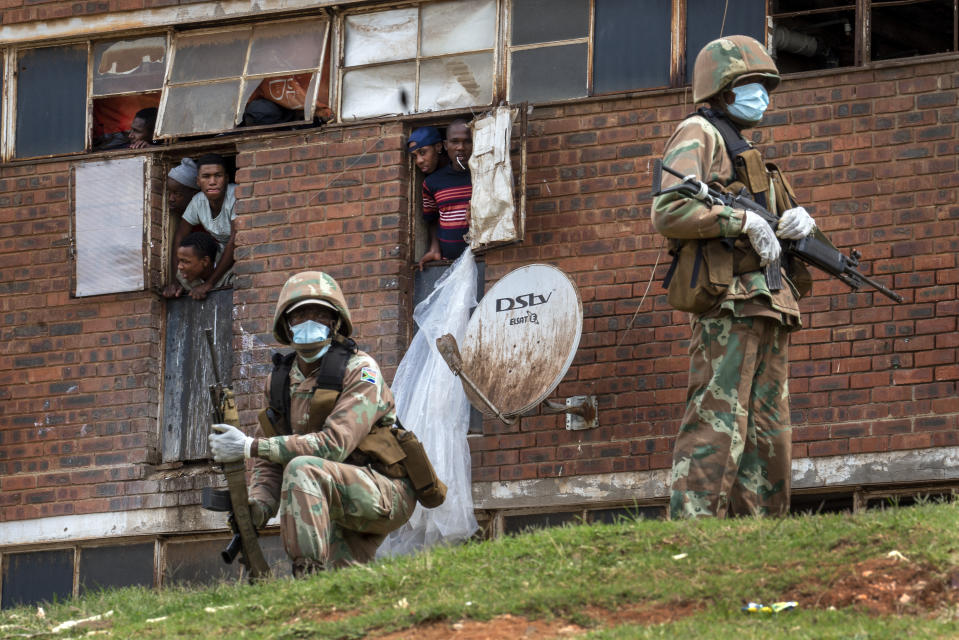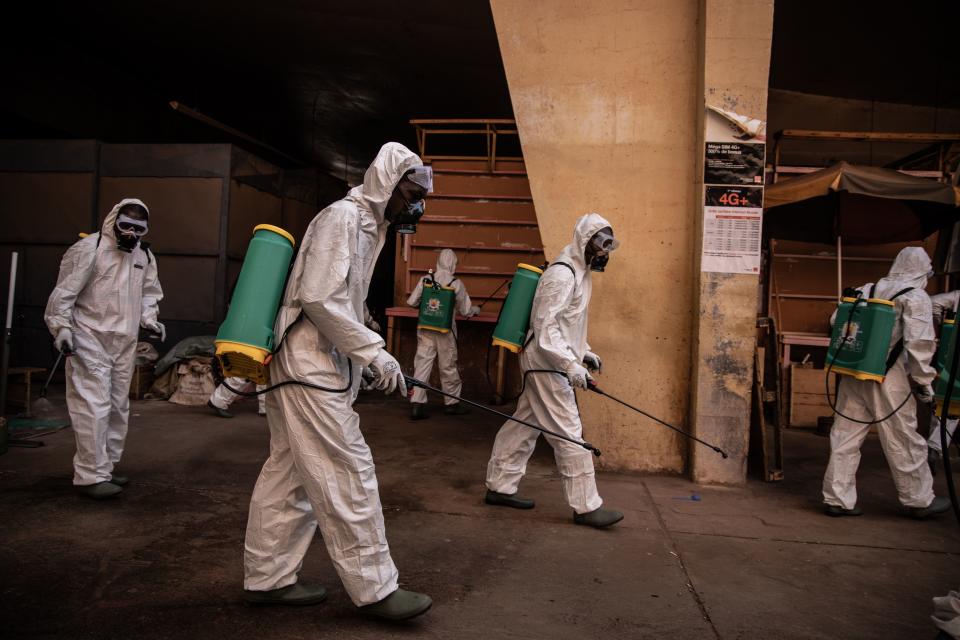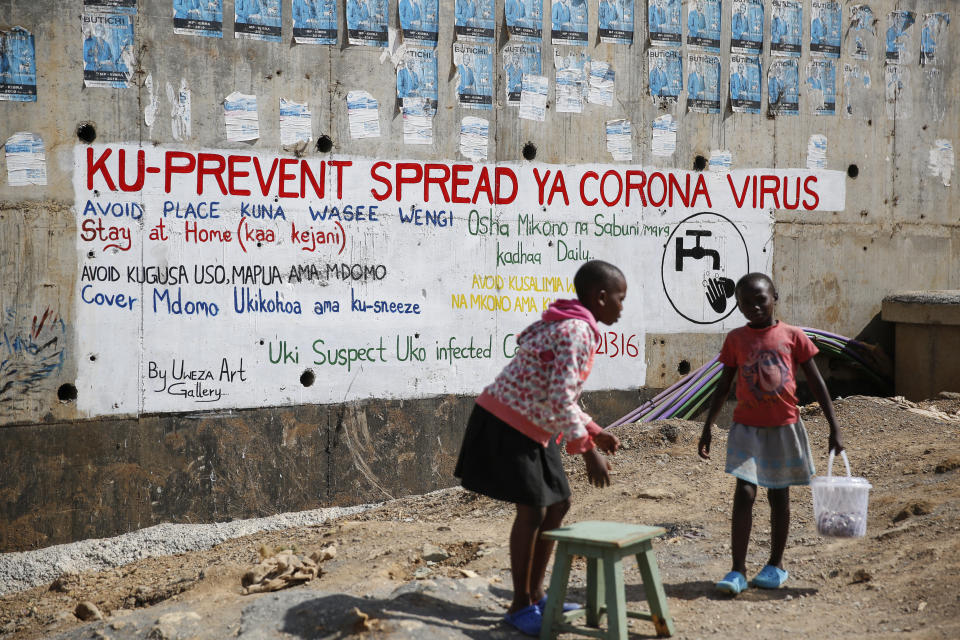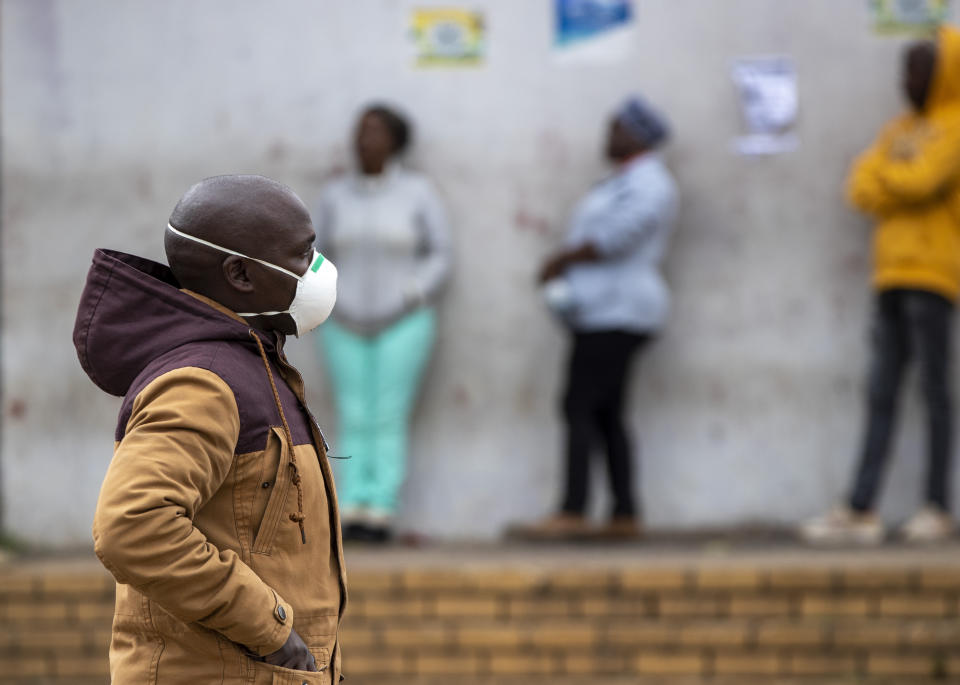'It is an existential threat': As coronavirus spreads to Africa, health experts warn of catastrophe
Even as Asia, Europe and North America battle to keep the spread of coronavirus under control, public health officials are raising the alarm that infection rates in Africa could soon boom, while also undermining international efforts to end the pandemic.
So far, African countries have been spared the high death tolls seen in Italy, Spain, and the U.S., but officials are bracing for the worst in the coming weeks. Many are concerned that as cases increase, COVID-19 will make its way to vulnerable populations in war zones, slums and sprawling refugee camps across the continent.
Princeton University professor Jessica Metcalf, who specializes in infectious diseases and public policy and who has worked in Africa, warns that the introduction of the coronavirus into the “tsunami of other infectious diseases” across vulnerable populations in Africa might be catastrophic.
With very little known about possible interactions with other maladies like malaria, which kills more than 300,000 Africans per year, she notes that the prospects are alarming. “I think it could be a really serious issue and one where there aren’t clear levers to pull to diminish the impact,” she told Yahoo News. “It’s likely to be one last straw that might break the camel’s back.”

Experts fear that African nations’ limited health care infrastructure may be quickly overwhelmed by the fast-spreading coronavirus and that the interaction between COVID-19 and already prevalent infectious diseases may result in a perfect storm of sickness that could, according to worst-case scenarios, kill millions.
“It is an existential threat for our continent,” Dr. John Nkengasong, director of the Africa Centers for Disease Control and Prevention, said in a recent press call. “We have to win the battle against COVID in Africa in order to survive.”
Even statistical models that factor in robust public health measures suggest hundreds of thousands may die. “It’s a nightmare dystopian situation that we’re talking about,” said Dr. Irwin Redlener, director of the National Center for Disaster Preparedness at Columbia University. “In Africa and Asia, and in war zones, places with severe poverty, huge ghettos all over the world, it’s almost inevitable that COVID-19 will be an issue.”
Already, deaths in some countries have skyrocketed. On March 18, Burkina Faso suffered the first confirmed COVID-19 fatality in all of sub-Saharan Africa. Three weeks later, more than 360 people in the tiny Sahelian state have died of the disease. “Case numbers are increasing exponentially in the African region,” said Dr. Matshidiso Moeti, the World Health Organization regional director for Africa. “It took 16 days from the first confirmed case in the region to reach 100 cases. It took a further 10 days to reach the first thousand. Three days after this, there were 2,000 cases, and two days later we were at 3,000.”

There are now more than 10,200 confirmed coronavirus cases on the continent. Any count is, however, likely to be a “gross under-estimate of the true burden of COVID-19” because the symptoms are similar to other viral diseases and because of the dearth of available tests for it, said Dr. Meredith McMorrow, a medical officer in the U.S. Centers for Disease Control and Prevention’s influenza division based in South Africa, during a conference call with reporters.
For many across the continent, access to any medical care, much less COVID-19 testing, is severely limited. Escalating violence from jihadist militants in Burkina Faso, for example, has not only made 700,000 people homeless over the last year but it has also closed or reduced services at 275 health centers, leaving internally displaced people (IDPs) without adequate health care and packed into camps and slums where there is an elevated risk of contracting COVID-19.
“In West and Central Africa, the majority of refugee or IDP sites don’t have proper health care facilities. If someone is ill, they may not even have the possibility of seeking out health care,” Alexandra Lamarche, senior advocate for West and Central Africa at Refugees International, told Yahoo News.
Many African countries lack sufficient medical and public health infrastructure as well as sophisticated medical equipment to deal with a pandemic. A recent Lancet study of COVID-19 in West Africa noted that not only do countries in the region have “poorly resourced health systems, rendering them unable to quickly scale up an epidemic response,” but that “a rapid acceleration in the number of cases could quickly overwhelm already vulnerable health systems.”

These shortfalls are hardly confined to the west of the continent. Last week, New York City Mayor Bill de Blasio said 15,000 additional ventilators were needed for his city of 8 million people to get through the next two months.
The Central African Republic, a desperately poor nation at the center of the continent, has a total of just three ventilators for its entire population.
“COVID-19 has the potential to tear through the Central African Republic at lightning speed if the country doesn’t get the support it needs to adequately protect itself against the virus. Three ventilators in a country of 5 million people is setting the country up for catastrophe,” warned David Manan, country director in the Central African Republic for the Norwegian Refugee Council, a leading humanitarian relief agency.
Nkengasong of the Africa CDC echoes these same warnings. “We have so many people in several parts of Africa, depending on which country, infected with malaria, with tuberculosis, and HIV,” he said. “We have a large number of our population that is malnourished, so we just don’t know how these factors will play into the dynamics and the projection of COVID-19.”
Some experts believe that certain factors, e.g. extensive experience in responding to previous epidemics like Ebola, will allow some African countries to effectively deal with the pandemic. Age might also play an important role, since old age is a major risk factor for death from COVID-19. “At least 70 percent of our population is less than 30 years old. … If we look at it strictly from mortality, you could argue on the basis of what we saw in China, that this may be something that will play in our favor,” Nkengasong said, while cautioning that in the United States, more younger people seem to require hospitalizations and oxygen support.

A Lancet study published last week also noted that despite having young populations, some African countries have other risk factors, like high blood pressure and diabetes, at rates similar to European countries. In fact, across the entire world, Africa has the highest prevalence of high blood pressure, with 46 percent of the population over 25 years of age estimated to be hypertensive.
Nationwide lockdowns are in effect in Kenya, Uganda, the Republic of the Congo and elsewhere on the continent, but experts caution about dire collateral consequences, if they block access to essential food, water, and health care. “Lockdowns not only stymie the spread of the virus but they also stop the flow of income, prevent people from reaching markets for vital supplies, and prohibit access to communal water points,” Alexandra Lamarche of Refugees International told Yahoo News.
“It is essential,” according to the World Health Organization’s regional office for Africa, “that African governments continue to promote strict adherence to proven public health measures such as social distancing, good personal hygiene practices and cough etiquette.”
But such measures are hardly applicable to vast populations of refugees and IDPs in nations like the Democratic Republic of Congo, Nigeria, South Sudan and Uganda. “The measures most countries have put in place to stop the spread of the virus — physical distancing, frequent hand-washing, reducing contact — are impossible for families living in refugee camps or people who rely on daily bartering and trading to survive,” Beth deHamel, interim CEO of the humanitarian NGO Mercy Corps, recently observed.

An analysis published late last month by a team of researchers at Imperial College London, whose modeling work has already helped influence COVID-19 policy in the United States, the United Kingdom and elsewhere, found that if no action was taken to reduce the spread of the coronavirus, around 1 billion people in sub-Saharan Africa could become infected by the end of the year, with almost 2.5 million possible fatalities. With strong suppression via public health measures, including testing and isolation of cases and widespread social distancing measures, the models showed infections brought down to 110 million and deaths held under 300,000.
“We cannot eliminate COVID in any country in the world if we still have it lingering in any part of the world,” said Dr. Nkengasong of the Africa CDC, as he called for “global solidarity” in fighting the pandemic.
“We still have an opportunity in Africa to do something, but we need support and we need partnership quickly,” he said. “Otherwise, our situation will be devastating.”
_____
Click here for the latest coronavirus news and updates. According to experts, people over 60 and those who are immunocompromised continue to be the most at risk. If you have questions, please refer to the CDC’s and WHO’s resource guides.
Read more:

